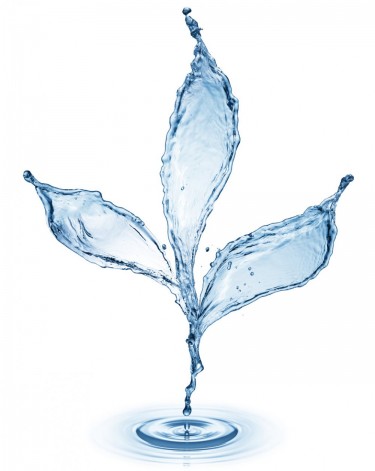How Technology Aims to Curb Cannabis' Heavy Water Demands

The Cannabis market was estimated to be $5 billion in 2018. This increased to $13.6 billion in 2019, and consequently $20.5 billion in 2020. It should be noted that experts predict that the industry could be worth $90.4 billion by 2026. The high demand for cannabis products is notably because of a couple of factors including,
The wide range of therapeutic effects it possesses
The mindblowing recreational effects it induces
Innovative new products
The various means of consumption
How means of consumption is driving cannabis demand
The various means of cannabis consumption keeps increasing over the years. It can be said that this is one of the major contributing factors to its high demands. Before now, cannabis was conventionally consumed by smoking. This means of consumption was popularized by pop stars and has been the primary means of cannabis consumption for years. However, as time passed and the cannabis industry grew, more innovative means of consumption were developed. Below are a couple of the different means of consumption.
Vaping is a safer means of consuming cannabis when compared to smoking. The cannabis is allowed to vaporize by heating it below its typical combustion point.
Dabbing is similar to vaping but instead of heating to a temperature below normal combustion of cannabis, the dabbing process heats it on a solid surface. It has been reported to effect more-high than smoking. Its safety is also debated.
Cannabis consumables are recent trends. It is being infused into different edibles such as cookies and drinks like cocktails.
Cannabis plant extracts are now used to make sprays that users can spray under the tongue. This process of consumption is medically known as sublingual absorption. It is mostly used when cannabis is used for a medicinal purpose.
Tinctures are oil-like cannabis products users can drop underneath their tongue or in their tea; even in foods.
Cannabis is now being used in beauty and skin products. Users only need to apply it on the surface of their body and it is absorbed into the bloodstream to produce its medicinal effect.
The various innovative means of consumption coupled with other important factors have driven cannabis demand to the roof. To satisfy the market demands, established farmers are cultivating more cannabis, new growers and investors are also getting involved in the lucrative business. Of course, this is creating more wealth and employment opportunities for the masses. But on the flip side, the environment is left to suffer. How? Cannabis plants require a high amount of water for irrigation.
The pricing and quality of a cannabis harvest is mainly determined by its constituents. To ensure uniformity in all of the cultivated plants, it is required that irrigation is consistent.
Cannabis and water demand
The Cannabis growth cycle can take between 10-32 weeks if cultivated from seed. It is lesser if the farmer cultivates a clone or an autoflower seed, instead. This means the plant will require water for the whole period of growth. A hypothetical model estimated that a cannabis plant's complete growth cycle will require 6 gallons of water.
There are three main methods employed by farmers around the world in growing cannabis: outdoor, greenhouse, and indoor.
Irrespective of the method used, cannabis plant will need enough water for good growth. Farmers using the outdoor method may source for lesser water from the municipal water supply due to the occasional rainfall. While farmers using the greenhouse and indoor methods will primarily get their water from municipal water supply sources. And due to the inability to control environmental conditions (such as harsh sunlight) and pests, many growers have resorted to greenhouse and indoor cultivation.
Farmers cultivating cannabis indoor can also use either hydroponics or aeroponics methods.
Hydroponics: This indoor cannabis growing method submerge plants root in a nutrient-rich liquid solution.
Aeroponics: Unlike hydroponics, this method suspends the cannabis plant root in a mist and air environment rich in nutrients.
With the increasing need for cannabis cultivation to meet market demands, cannabis is now competing for water with humans. The negative impact of this is worse in areas where water is scarce.
However, different technologies have been developed to stem the negative effect of this emerging problem.
Innovative tech solutions
As stated earlier cannabis growers mainly get their water from municipal supply. Cannabis plants require pure water to maintain the quality and conformity of their constituent nutrients. To avoid the use of contaminated water, growers usually have the water filtered. The filtered water is then stored in a reservoir or fertigation system to be used for irrigation. It should be noted that a lot of water is usually wasted during this process. However, with the help of technology, the water that ought to have been wasted during the filtration process can now be reclaimed, re-filtered and re-used.
One of the technologies making this happen is Automated Reclaimed Condensate System (ARCS), developed by Hydrologic. Although Hydrologic stated its mission is to help reclaim all wasted water, ARCS at present can only reclaim about 80% of wastewater.
ARCS also removes heavy metals and biological wastes that can contaminate cannabis plants. The water pH of water processed by ARCS is maintained at the recommended level for cannabis plants’ perfect growth.
Another technology aiming to curb cannabis water demand is Aqutonix developed by a group of professionals in South Korea. The technology purifies municipal water. It also weakens the hydrogen bonds in the water using high-voltage electricity. Water with weaker hydrogen bond is easily absorbed by cannabis plant root. When water is easily absorbed by cannabis roots, consumption can be reduced by almost 40%.
Researchers at the University of Georgia have also invented a GPS-based technology for irrigation. This technology is more suitable for the outdoor cultivation of cannabis. Farmers can specifically target plants and areas in need of irrigation instead of the blind 360-degree irrigation method. GPS-based irrigation has been estimated to reduce farming water consumption by 15 percent.
Another technology worthy of mention is the use of “bubbler” nozzles for irrigation. This is the brainchild of Kansas Division of Water Resources. Suitable for outdoor farming, the nozzles deliver water much closer to the ground than pivot nozzles.
Bottom line
With continuous innovation and development in the cannabis industry, it is expected that water demand by cannabis farming will significantly reduce. Achieving this will drastically reduce environmental concerns associated with cultivation of cannabis.
WATER AND WEED, READ MORE..
COLORADO WATER SUPPLY TAINTED WITH THC, ORDER FAST!







